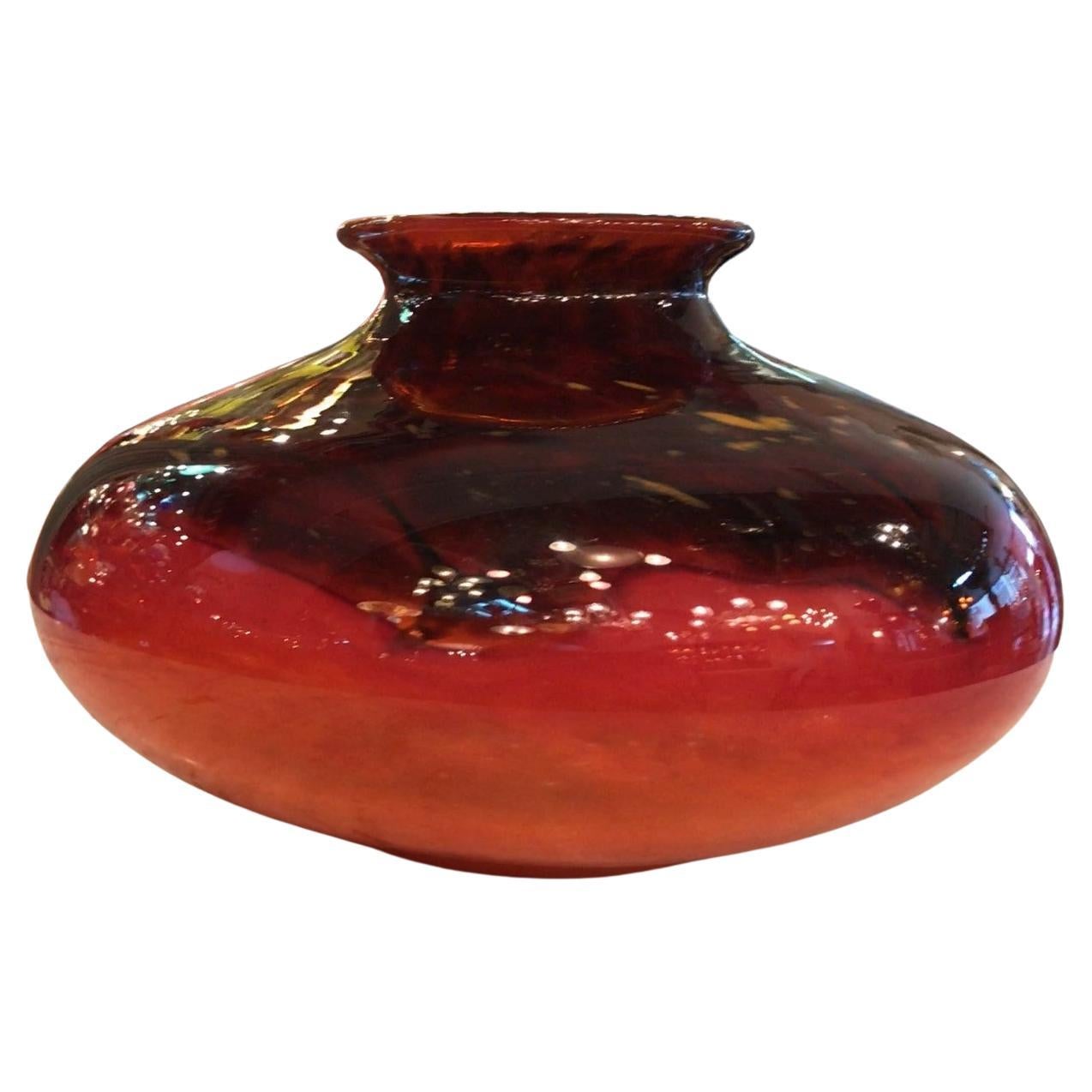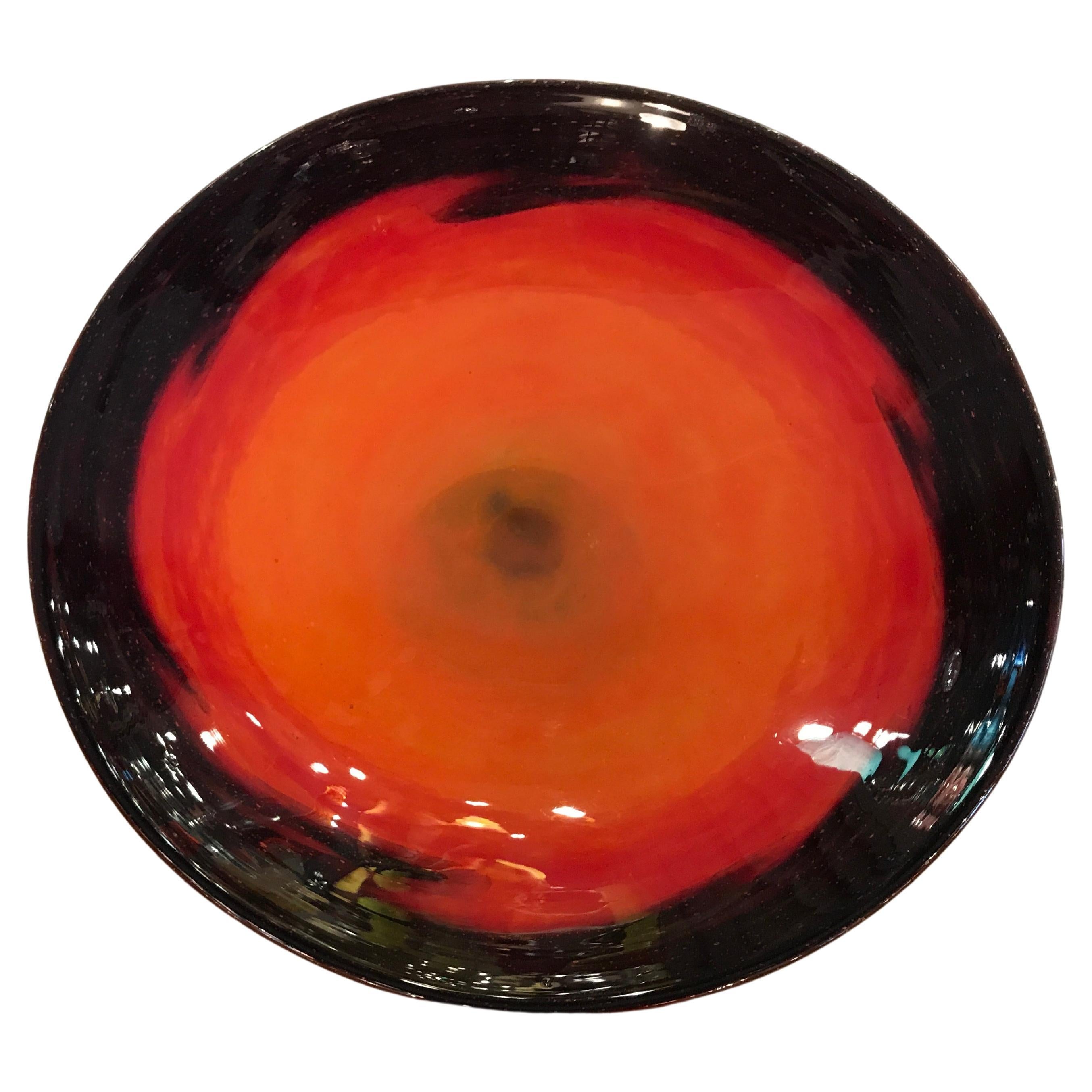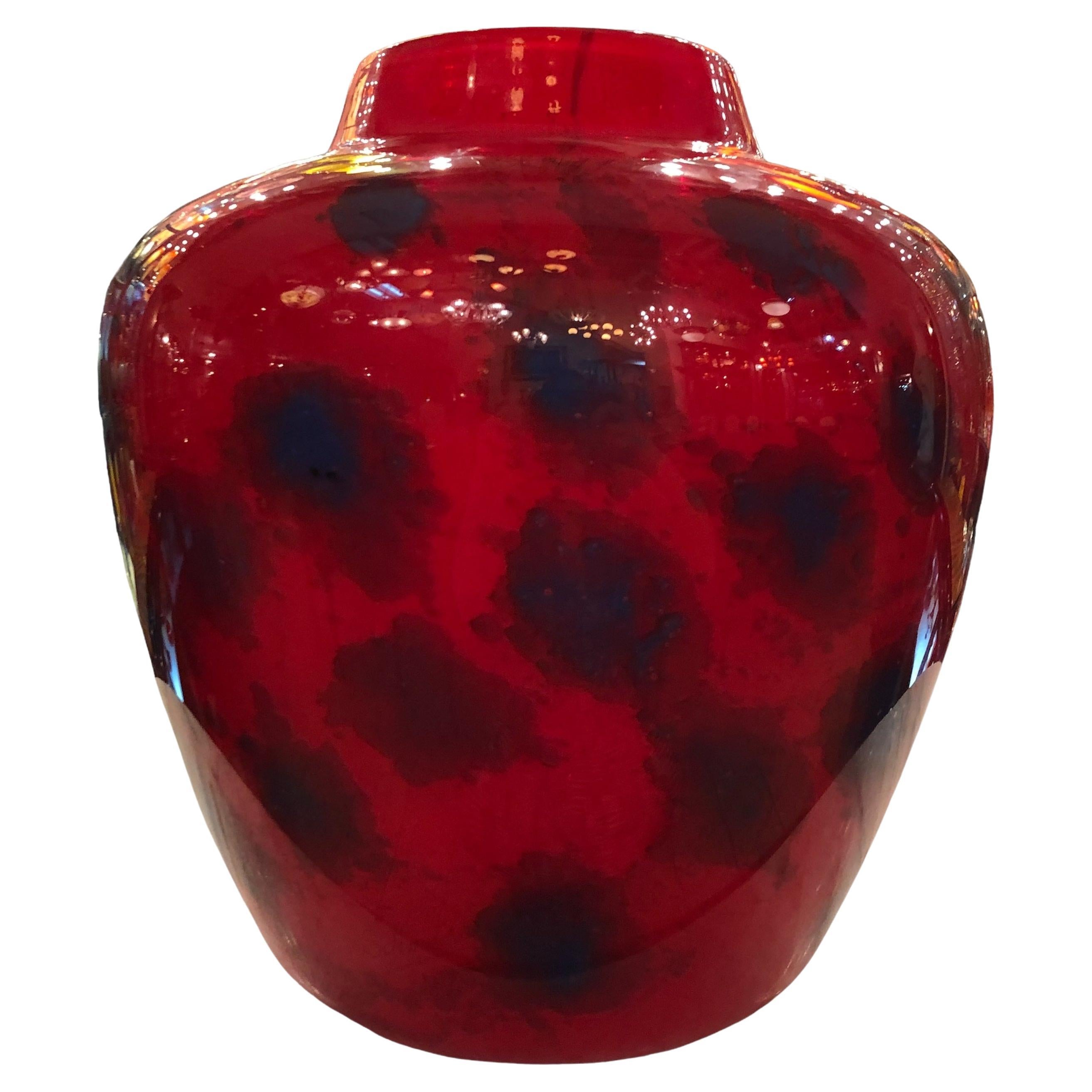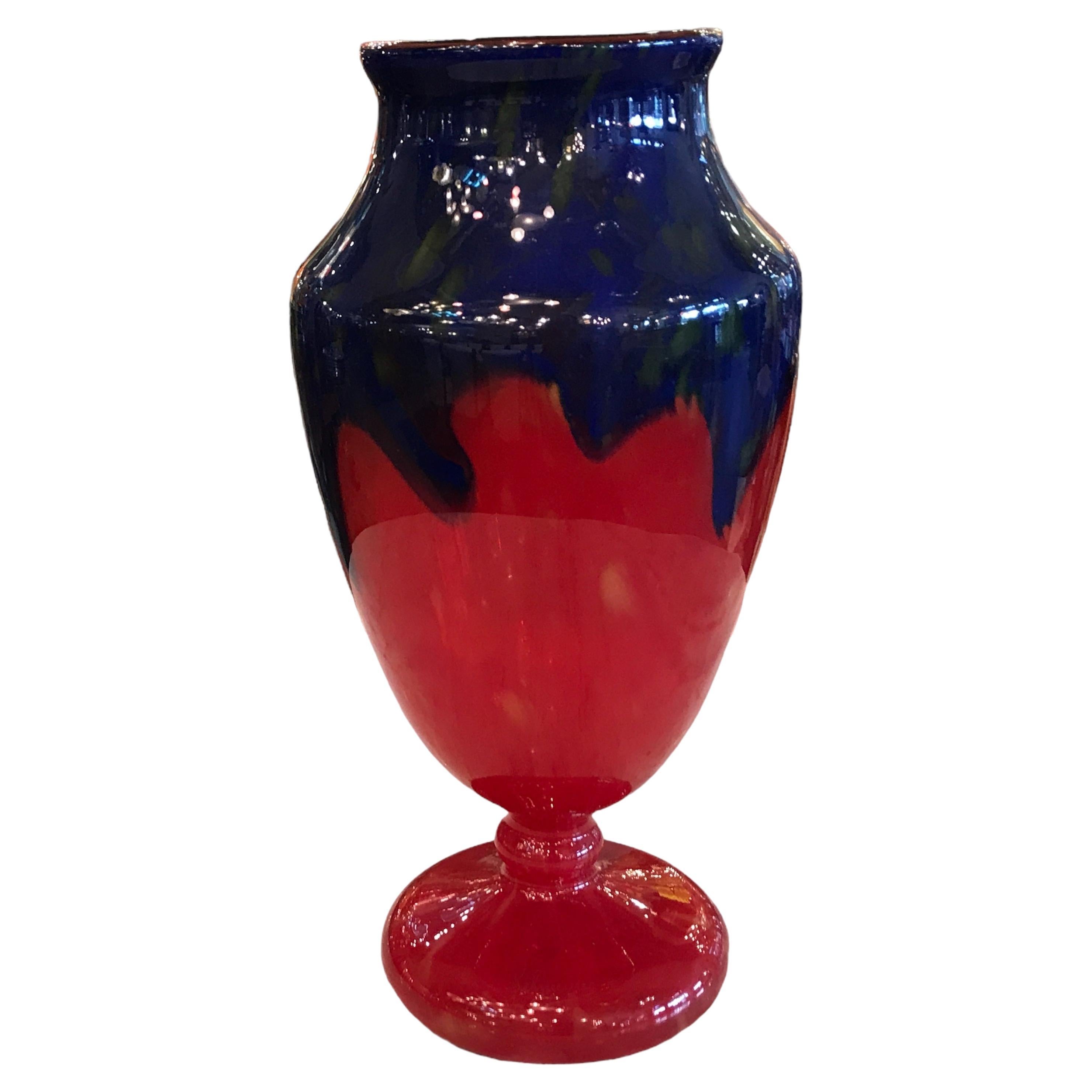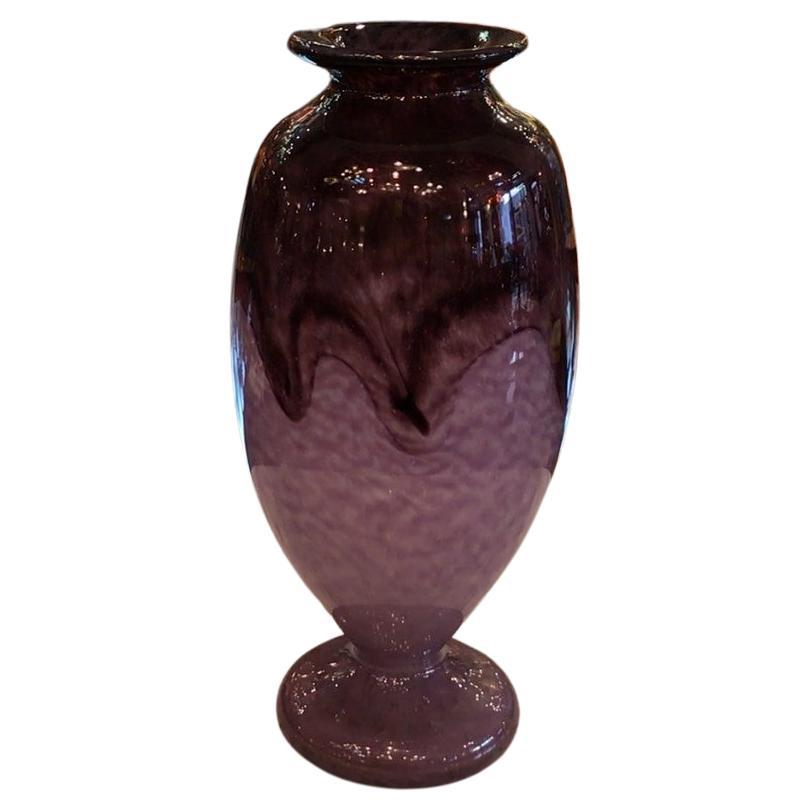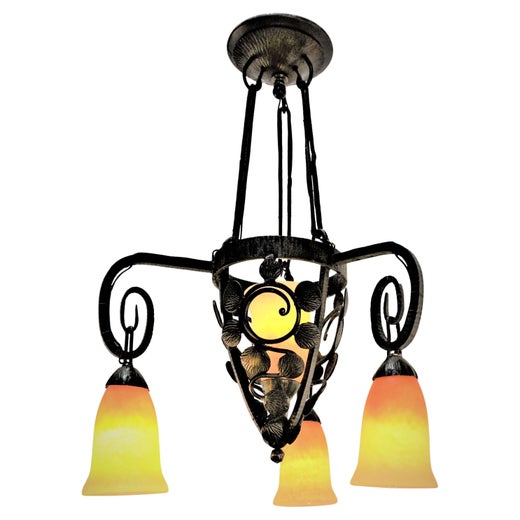Signature du vase : Schneider ( Coupe Jade Décoration ), 1922, Style : Art Déco
À propos de cet article
- Créateur:Charles Schneider (Designer)
- Dimensions:Hauteur : 14 cm (5,52 po)Diamètre : 11 cm (4,34 po)
- Style:Art déco (De la période)
- Matériaux et techniques:
- Lieu d'origine:
- Période:
- Date de fabrication:1922
- État:Usure conforme à l'âge et à l'utilisation.
- Adresse du vendeur:Ciudad Autónoma Buenos Aires, AR
- Numéro de référence:
Charles Schneider
Les Verreries Schneider, fondées par les frères Charles et Ernest Schneider à Epinay-sur-Seine, en France, en 1917, figuraient parmi les principaux producteurs de verre d'art de l'entre-deux-guerres, créant des récipients et des luminaires aux couleurs exubérantes dans les styles Art nouveau et Art déco . L'usine a connu son apogée dans les années 1920, lorsqu'elle a créé des lustres emblématiques et des vases en verre camée délicieusement décorés qui sont encore très demandés aujourd'hui.
Nés dans le dernier quart du XIXe siècle à Château-Thierry, près de Paris, Charles et Ernest Schneider déménagent très jeunes avec leur famille à Nancy, haut lieu du design Art nouveau, particulièrement connu pour le verre. Parmi les maîtres de la ville, le studio de cristal Daum, où les deux frères ont travaillé au début du XXe siècle, Ernest à la vente et Charles à l'atelier de gravure et de décoration, tout en apprenant le dessin et le modelage auprès d'Henri Bergé et en fréquentant l'École des Beaux-Arts de Nancy. En 1904, il s'inscrit à l'École nationale supérieure des beaux-arts, à Paris, où il étudie la peinture et la gravure sur métal et participe régulièrement à la section gravure du Salon de la Société des artistes français, recevant deux fois un prix.
Vers 1912, les frères et leur ami, l'architecte Henri Wolf, rachètent une petite verrerie spécialisée dans les ampoules électriques et la rebaptisent Schneider Frères et Wolff. Les associés ont incité une vingtaine d'ouvriers de l'atelier Daum à rejoindre l'entreprise, qui a produit des vases et des lampes en camée de grande qualité jusqu'au début de la Première Guerre mondiale, en 1914, date à laquelle Charles, Entice et la plupart des ouvriers ont été appelés à combattre. Démobilisés en 1917, les Schneider ont rouvert l'usine, fabriquant dans un premier temps de la verrerie pratique pour les hôpitaux. Après la guerre, pour financer leur retour sur le marché du verre d'art, ils vendent des actions de l'entreprise, désormais appelée Société Anonyme des Verreries Schneider. Le succès de la Les élégants verres à boire et les vases camées de style Art nouveau qu'ils produisent permettent aux frères de racheter les actions. Ils rebaptisent alors l'usine Verreries Schneider.
Lorsqu'un incendie détruit les studios de Gallé en 1918, les Schneider offrent un espace à un groupe d'artistes de l'entreprise afin qu'ils puissent poursuivre la production. En retour, ils enseignent à Charles la marqueterie de verre. Semblable à la marqueterie de bois, ce procédé consiste à découper des sections dans une surface de verre et à les remplir avec des pièces d'une couleur contrastante. En 1921, Schneider a déposé une marque déposée pour sa technique de fabrication de lampes et de vases en verre camée - illustrée sur cette pièce du début des années 1920 -. qu'il signe "Le Verre Français" ou "Charder", ce dernier nom étant peut-être un porte-manteau combinant son prénom et son nom de famille. Ces œuvres sont populaires et se vendent bien dans les grands magasins français, notamment aux Galeries Lafayette et au Bon Marché. Des pièces plus élaborées et uniques du Studio étaient signées "Schneider" et proposées dans des galeries d'art parisiennes telles que Au Vase Etrusque et Delvaux.
Les Schneider participent à l'Exposition internationale des arts décoratifs et industriels modernes de 1925 à Paris, à laquelle Charles est membre du jury. L'entreprise est alors à son apogée, élargissant à la fois son répertoire de designs et le nombre de ses employés, qui passe à 500. Au cours de cette période, il a commencé à s'éloigner des formes organiques de l'Art nouveau pour s'orienter vers les motifs plus géométriques de l'Art déco, certaines pièces incarnant une sorte de style de transition, comme ce lustre. Charles a également commencé à expérimenter les poudres pigmentées, du verre finement broyé mélangé à des oxydes métalliques, qui donnent des couleurs brillantes et irisées lorsqu'elles sont appliquées sur une surface en verre.
Une grande partie de la production de verre d'art de l'usine était vendue aux États-Unis. Lorsque le marché boursier américain s'est effondré en 1929, la demande a été pratiquement anéantie et l'entreprise a lutté pour rester à flot tout au long des années 1930. Ernest est décédé en 1937 et, pendant la Seconde Guerre mondiale, l'usine a été saisie par les troupes allemandes et utilisée comme cantine. En 1950, Charles et son fils créent une nouvelle usine, les Cristalleries Schneider, à Epinay-sur-Seine, qui produit pendant plusieurs années des vases en verre soufflé, de petites sculptures et des luminaires qui connaissent un certain succès. Charles Schneider est décédé en 1952 et l'usine a finalement fermé ses portes en 1981.
- ExpéditionRecherche du devis...Expédition à partir de : Ciudad Autónoma Buenos Aires, Argentine
- Politique des retoursCet article ne peut pas être retourné.
- Vase Sign: Schneider ( Jade Decoration ), Year: 1922, Style: Art DecoPar Charles SchneiderLabel : Schneider + maison de disques qui les a vendus Ce verre a été vendu par l'entreprise (Fortunato A. Fasce, Florida 425, Buenos Aires). Page : 38 livre Charles Schneider Le Ver...Catégorie
Vintage, années 1920, Français, Art déco, Verre
MatériauxVerre d'art
- Signe du vase : Schneider (Cup Jade Decoration ), 1922, Style : Art DécoPar Charles SchneiderSigne : Schneider Page : 190 livre Schneider Maître Verrier Auteur : Olivier Ador Schneider Charles Schneider (1881-1953) a étudié l'art dans deux des plus prestigieuses écoles d'ar...Catégorie
Vintage, années 1920, Français, Art déco, Verre
MatériauxVerre d'art
- Signature du vase : Schneider ( Décoration Jade), France, 1922, Style : Art DécoPar Charles SchneiderSigne du vase : Schneider Charles Schneider (1881-1953) a étudié l'art dans deux des plus prestigieuses écoles d'art françaises. D'abord à l'Ecole des Beaux-Arts de Nancy, puis à l'...Catégorie
Vintage, années 1920, Français, Art déco, Verre
MatériauxVerre d'art
- Signature du vase : Schneider ( Décoration en jade ), France, 1922, Art décoPar Charles SchneiderSigne du vase : Schneider Charles Schneider (1881-1953) a étudié l'art dans deux des plus prestigieuses écoles d'art françaises. D'abord à l'Ecole des Beaux-Arts de Nancy, puis à l'...Catégorie
Vintage, années 1920, Français, Art déco, Verre
MatériauxVerre d'art
- Vase Schneider, France, décoration en jade, style Art déco, 1922Par Charles SchneiderSigne du vase : Schneider ( Décoration en jade) Schneider Charles Schneider (1881-1953) a étudié l'art dans deux des plus prestigieuses écoles d'art françaises. D'abord à l'Ecole des...Catégorie
Vintage, années 1920, Français, Art déco, Verre
MatériauxVerre d'art
- Signature du vase : Schneider ( Décoration Jade), France, 1922, Design : Art décoPar Charles SchneiderSigne du vase : Schneider Charles Schneider (1881-1953) a étudié l'art dans deux des plus prestigieuses écoles d'art françaises. D'abord à l'Ecole des Beaux-Arts de Nancy, puis à l'...Catégorie
Vintage, années 1920, Français, Art déco, Verre
MatériauxVerre d'art
- Vase « Jade » Schneider Art DécoPar Charles SchneiderCharles Schneider, Vase de Jade, un vase difficile à trouver de la marque Schneider, qui utilisait 32 variations de nuances, plus cher et plus exclusif, que Le Verre Français, qui n'...Catégorie
Début du 20ème siècle, Français, Art déco, Vases
MatériauxVerre brun
- Vase en verre Art Déco des années 1930, style cubiste, topaze et topaze, signé par SchneiderPar Charles SchneiderCe magnifique vase en verre Art Déco français de qualité musée, de couleur topaze et de style «ubiste », réalisé par Schneider, est décoré d'un motif géométrique « gravé à l'acide » ...Catégorie
Vintage, années 1930, Français, Art déco, Verre
MatériauxVerre d'art
- Grand vase en verre de style cubiste Art Déco des années 1930 « gravé à l'acide », signé par SchneiderPar Charles SchneiderThis stunning ombre topaz, museum quality French Art Deco "Cubist style" glass vase by Schneider was realized circa 1930.. This piece employs the highly sought after "Acid Etched" te...Catégorie
Vintage, années 1930, Français, Art déco, Verre
MatériauxVerre d'art, Verre brun
- Vase en verre topaze Art déco des années 1930, signé par SchneiderPar Charles SchneiderCe magnifique vase en verre de style cubiste de l'Art déco français de Schneider est décoré d'un motif rectangulaire incliné "gravé à l'acide" sur le dessus et de bandes de motifs de...Catégorie
Vintage, années 1930, Français, Art déco, Vases
MatériauxVerre, Verre d'art
- Vase en verre craqueleur topaze Art Déco français de qualité musée, signé par SchneiderPar Charles SchneiderCe superbe vase Art déco (signé Schneider) a été réalisé dans le studio des estimés verriers Ernest et Charles Schneider vers 1925. Les frères Schneider étaient parmi les artistes ve...Catégorie
Vintage, années 1920, Français, Art déco, Vases
MatériauxVerre
- Charles Schneider, vase en verre Art déco, France, vers 1930Par Charles SchneiderVase Art déco en verre fumé gravé à l'acide par Charles Schneider. Signé "Schneider, France". Daum a été fondée à Nancy, en France, par Jean Daum en 1878. Après sa mort en 1885, se...Catégorie
Début du 20ème siècle, Français, Art déco, Verre
MatériauxVerre
